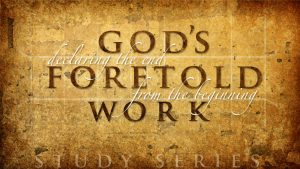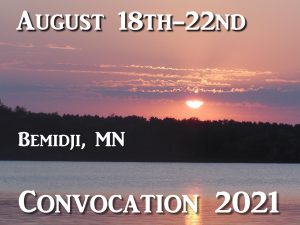Content in category Jacob’s Trouble
 […] First, let me recommend the below Bible study by long friend, Dean Van Druff: http://www.acts17-11.com/joseph.html I read it today for the second time and was as moved as I was the first time.
[…] First, let me recommend the below Bible study by long friend, Dean Van Druff: http://www.acts17-11.com/joseph.html I read it today for the second time and was as moved as I was the first time.
Also, I’ve not had much time with it yet, but I’m quite impressed with a book that I found while searching for this topic on Amazon.com It looks to be a very valuable resource for our interest. Other than Dean, this is the only author that I know of who has published something that compares Joseph’s self revelation to his brethren as a type of Jesus’ revelation to Israel at His return. She also says it is something that was for her a new discovery that she considers timely in the church’s relation to Israel. Just today, I notice she expects another expulsion and flight of Jews. That’s a comparatively rare perspective. The book is: “Joseph, Jesus, and the Jewish People: A Gospel Tract Hidden in the Torah” Reggie
[…]
Here’s what I do:
I simply begin with people’s familiarity with the story of Bethlehem and show them the prophecy in Mic 5:2, pointing out the antiquity of the prophecy (8th century contemporary of Isaiah). I then point out the next verse (Mic 5:3), which shows the “giving up” of Israel, pointing out the causal connection between the “therefore” of verse 3 and the “giving up” of the nation to the smiting of the ruler in verse 1 – Mic 5:1 (obviously the ruler from Bethelehem of verse 2 – Mic 5:2). I make much of the fact that the “giving up” of Israel is never permanent, but only UNTIL the time of Zion’s travail, pointing out that this is OT language for the travail and subsequent birth of the nation which follows the unequaled travail of “Jacob’s trouble” (Isa 66:8; Jer 30:7; Dan 12:1). I then ask if they’ve ever heard of the “great tribulation” (many have through everything from the “Left Behind” series to the History Channel. I sometimes mention the view of many Rabbis who spoke of “the messianic woes” or “footsteps of the Messiah” in reference to this fearful time.
(After this simple foundation, the way is made for almost any point of importance. In other words, it is a convenient grid to build on, as it opens up many of the great questions and issues of the mystery of the faith in its full reach to the end of the age). […]
[…] Until recently, the church has, for the larger part, retired in defeat from Jewish evangelism. Yet nothing else is more calculated to prepare and deepen the church in its own faith than its encounter with the formidable Jew, the beloved enemy “for your sakes”. The Jew forces the church to do its homework. The challenge of outreach and witness to the Jew is calculated to deepen the church’s appreciation for the mystery of the faith as nothing else. If the church resigns its calling to go to the Jew first, it surrenders a key component in God’s larger strategy in the evangelism of the nations. Hence, the church that is ineffectual towards Israel is ineffectual in a crucial aspect of its mission, which must be accomplished in order for Christ to return.
Israel is God’s self appointed mission impossible. History has an appointment to keep. The glory of God is demonstrated in His ability to finally bring the very same people that He first brought out of Egypt into the Land to stay (see Num 14:11-21; Dan 2:44. Compare the phrase “other people in Lev 20:24, 26 with Dan 2:44). The divine conquest of Jewish unbelief will be the like the parting of the Red Sea. The birthing of Israel ‘in one day’ (Isa 66:8; Zech 3:9) will be a monument to irresistible grace, comparable to Paul’s sovereign divine arrest on the Damascus road (Gal 1:15-16; w/ Ps 102:13; 110:3). Only this will be public in the sight of all nations. Indeed God has bound the destiny of all nations to the fall and rising again of Israel. If the church knew this, as it once did, it could never pray for the kingdom to come on earth without this consciousness. It would see Israel’s salvation as a special object of its corporate travail (in analogy to Paul’s travail for his Galatians; Gal 4:19 w/ Isa 66:8; Rev 12:2). […]
[…] Then there is what Paul calls “the mystery of the faith,” which, while it includes all the above, includes also the pattern of resurrection of death, of deliverance out of affliction and weakness. We see it in Joseph, David, Daniel, all the prophets, and ultimately and perfectly in Christ as the suffering Servant of servants. I call it the Jacob’s trouble principle, whereby Christ is always revealed at the end of strength (see Deut 32:36; Dan 12:7). This is how it is that “the just shall live by faith” This is particularly the issue in tracing the character and necessity of Israel’s king as coming first in the form of the suffering Servant. This is the pattern seen so clearly in both Joseph and David, and in Zechariah’s prophecy that sees the Messiah as a priest upon His throne (Zech 6L13). It is the tremendous mystery of the incarnation of the seed of the woman in the poor and afflicted. This should be to some real measure evident in every believer, since it is the mystery of “Christ in you” (Col 1:27), just as it was no less the mystery of “the Spirit of Christ which was in them” (1Pet 1:11). […]
[…] In considering judgment on nations and particular localities, we should remember the pattern we observe in scripture. However righteous and set apart, Jeremiah, Ezekiel, and Daniel were required to taste the bitterness of exile along with the rest of the apostate nation. Therefore, though the end of an individual may be quite different in the ‘long run’, he or she may well be required to suffer in the judgements that descend on a nation whose iniquity has come to full. That is the pattern we see in Israel’s exile, and I can’t see where it would be too different in a world where the church is called to be a ‘diaspora’ people, scattered throughout the earth as a witness people. Why, even the church’s sacraments of baptism and the Lord’s table are suitably quite portable. We are a pilgrim people, in every place, and often on the move.
The church is called to be a light in a dark world. What part of the world does not lie in wickedness? Where does one go to hide their loved ones from the judgment that hovers over a cursed land? If we flee from certain levels of societal debauchery that seems to especially concentrated in some cities or nations more than others, we might well be fleeing to a worse place where God has marked a perhaps more hidden but just as hateful kind of pride. […]
[…] Ezekiel shows that when the Spirit is poured out at the day of the Lord, the face of God will never again be hidden from the nation that is now saved to the last man (Ezek 39:22-29 with Isa. 54:13; 59:21; 60:21).
This is the time that the sealed book (Dan 9:24; 12:4, 9) is revealed to Israel. But the sealed vision is not sealed to all. During the days of the tribulation, there is a remnant ‘that understand among the people’ (11:33; 12:3, 10). They will know the secret (the mystery of the gospel) and through their witness many will be turned to righteousness. A comparison of Zech 12:10 with Mt 23:39 will show that the end of the age waits till the beleaguered survivors of Israel receive the same revelation of the gospel that came down from heaven at Pentecost (1Pet 1:12). This is the rock on which the church is built; it is the revelation of Christ that cannot come by flesh and blood.
So I believe the two days of Hos 6:2 coincide with the events that span the time between Christ’s two advents to Israel. Although history is littered with one shameful debacle of failed prediction after another, the time is coming when the question of the time will no longer be a question for the true church. The last seven years is clearly marked by a highly descript sequence of definite events that nothing in the past has come near to fulfilling (e.g., Dan 11:21-45). It is paramount that we know the distinctive character of the end time events in order to avoid the false alarms of prophetic speculation, and to recognize the real thing when it does come. […]
[…] Note that the unequaled trouble lasts a brief 3 1/2 years and ends in nothing short of the resurrection of the righteous (Dan 12:1-2, 11-13). So Jeremiah’s reference to a coming ‘time of Jacob’s trouble’, also described as without equal (Jer 30:7) is shown in Daniel as concluding the last half of the final week of years. In language almost identical to Daniel and Jeremiah, Jesus refers explicitly to Daniel’s prophecy of the abomination of desolation as marking the start of the unequaled tribulation (Mt 24:15, 21), which ends with His return (Mt 24:29-31), as also Paul in 2Thes 2:1-8. Most of John’s revelation is primarily occupied with the same brief period of 3 1/2 years (Rev 6-19). […]
[…] After establishing Jacob’s trouble as synonymous with a future Antichrist time of unequaled great tribulation, it would be helpful to trace the background of the concept in the larger history and goal of the covenant. This is key to showing its future significance, particularly as it relates to Israel. (The significance of Jacob’s trouble for the church has more particularly to do with the final victory of the remnant over Satan (Dan 11:32-35 with 12:1 and Rev 12:12). Of course the history of the concept of Jacob’s trouble begins with the crisis that Jacob faced upon his learning of the approach of Esau with four hundred armed men. This is the crisis of ultimate weakness that prepared Jacob for his desperate wrestling with the angel of the Lord’s presence at the ford of Jabbok. For Jacob, this was the ultimate, divinely appointed crisis that brought about the new priestly brokenness that would now distinguish the true “Israel” (one that has ‘power with God’) to be a priestly blessing to all peoples (Zech 8:23). […]
 […] First, let me recommend the below Bible study by long friend, Dean Van Druff: http://www.acts17-11.com/joseph.html I read it today for the second time and was as moved as I was the first time.
[…] First, let me recommend the below Bible study by long friend, Dean Van Druff: http://www.acts17-11.com/joseph.html I read it today for the second time and was as moved as I was the first time. 



